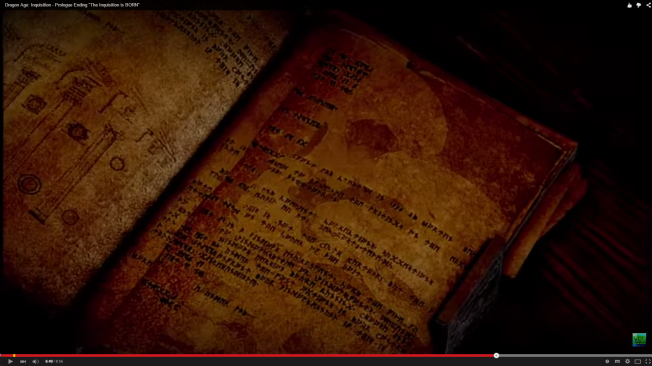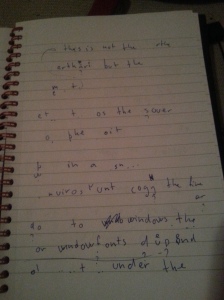By far one of the best characters in Dragon Age: Inquisition is this man.

His name is Dorian Pavus, he’s a smart, funny, and altogether fabulous character. A major part of the way his personality is written is his flirtatious self-confidence; he struts his stuff and will happily tell you that he’s well aware of how handsome he is.
At some point while re- or re-re-playing the game, I wondered why they chose that last name. He’s from The Tevinter Imperium, which is obviously modelled on the Roman Empire. This is something you see not least in the names, which rely heavily on -us endings to show the connection. At first, I thought his name was Parvus, ‘small’, a name that seemed a bit weird for such a big personality. When I realised my mistake and looked it up, I found that he had a wonderfully fitting name: pavus is a Latin word for ‘peacock’. It’s a nice little wink at the way Dorian behaves. It also made me as an Old Norse scholar happy, because Dorian is not the first fictional Peacock to work it.
In the wonderful Laxdæla saga, a boy called Ólafr is the son of the rich Icelandic chieftain Höskuldr and Melkorka, a slave he bought while abroad. Since Ólafr is going to grow up to be a hero as well as a father of heroes, Melkorka of course turns out to be not just any slave, but the daughter of an Irish king, kidnapped at the age of fifteen. Ólafr himself is fabulous. As the saga describes him early on, “It was soon seen that Olaf, as he grew up, was far superior to other men, both on account of his beauty and courtesy.” This beauty in time earns him a nickname:
Olaf grew up with Thord, and became a great man and strong. He was so handsome that his equal was not to be found, and when he was twelve years old he rode to the Thing meeting, and men in other country-sides looked upon it as a great errand to go, and to wonder at the splendid way he was made. In keeping here-with was the manner of Olaf’s war-gear and raiment, and therefore he was easily distinguished from all other men. Thord got on much better after Olaf came to live with him. Hoskuld gave Olaf a nickname, and called him Peacock, and the name stuck to him.
So there he is, Olaf Peacock, or as he’s called in Old Norse, Ólafr Pái (I use the Norse spelling, the 1899 translation quoted doesn’t). It’s interesting to note that contrary to the common idea of Viking Age men being almost comically butch and rugged, Ólafr is not necessarily given this nickname as an insult. He’s handsome and well dressed, and this theme follows him throughout the saga, where his colourful clothes and gold-inlaid weapons are often described. Ólafr also becomes the father of the tragic hero Kjartan, who is said to be the most beautiful man ever born on Iceland.*
That the words pái and pavus look very similar is of course no coincidence. Peacocks aren’t exactly common in Iceland, so the Old Norse word is a loan from Latin. As an aside, the fact that pái starts with a p tells anyone who knows their historical linguistics that the word has to be a loan word, as Proto-Indo-European initial p becomes f very early in the Germanic languages (which is why Latin has pater while English has father, for example). This is called Grimm’s Law and this is probably not the right place to go further into that.
So Dorian Pavus and Ólafr Pái have this in common, that someone – a game writer, a father, a saga author – decided that “peacock” would be a good way of describing them. They’re proud men, they care about their looks and their outfits, they know how to carry themselves. They’re great additions to any good story, and while they may stand out for all the right reasons, I don’t think they’re as weird as some would like to think.
* A couple of asides/recommendations: a) read Laxdæla saga, b) if you’re interested in Old Norse nicknames, there’s an entire dissertation about them by Paul Peterson. The name Pái is treated on page 202. And if you like both of these things, Saga Thing is the podcast for you.


